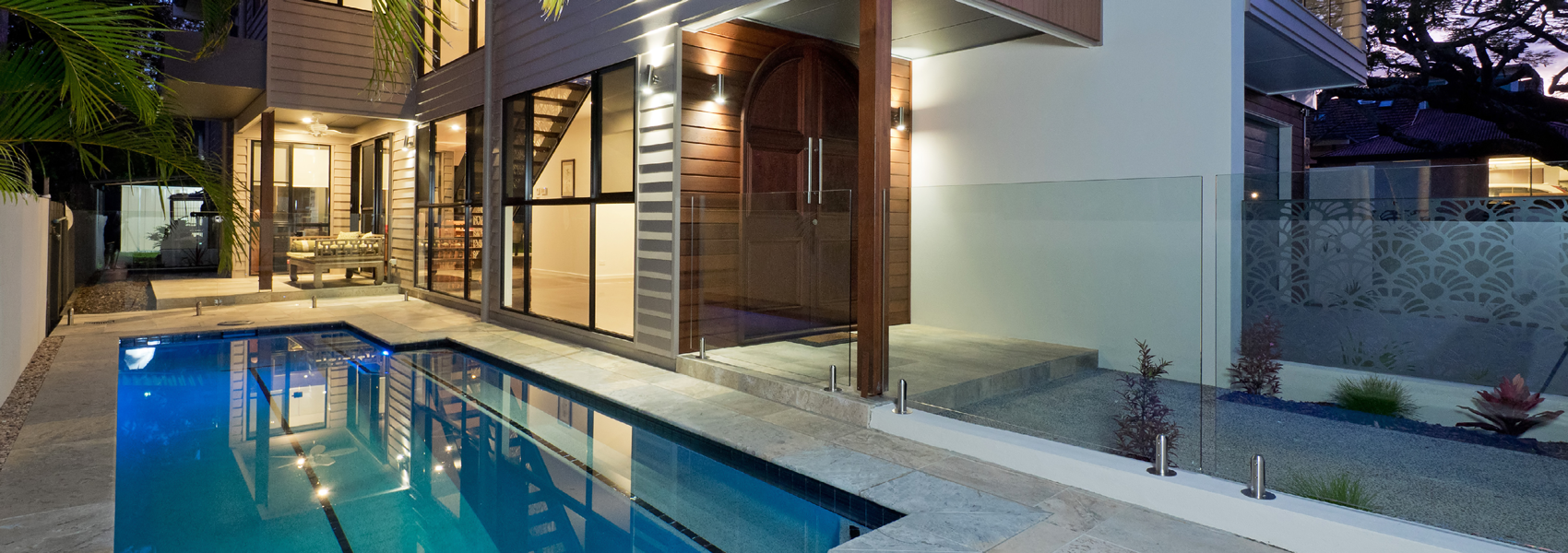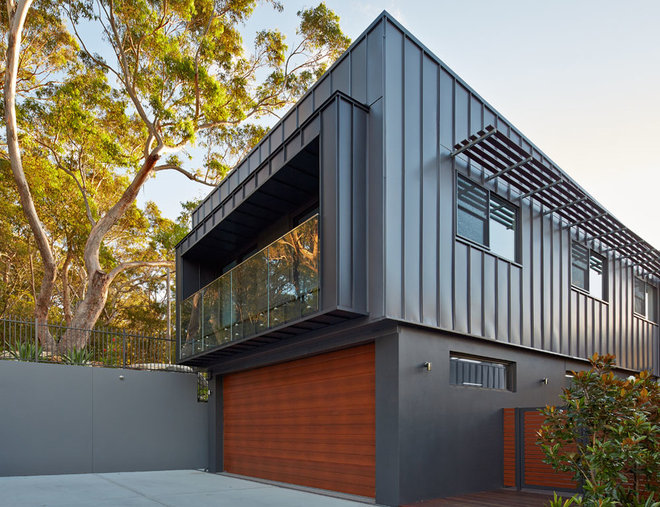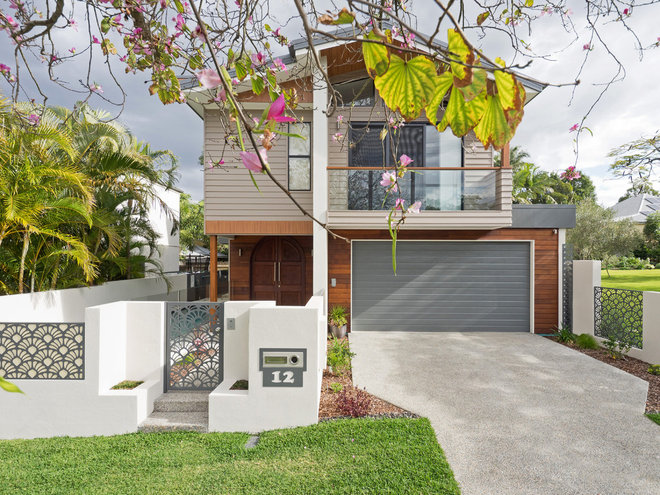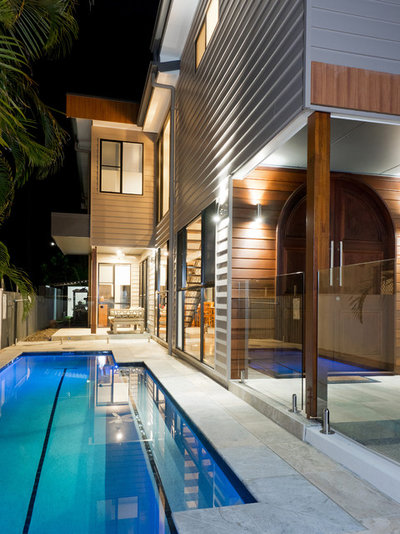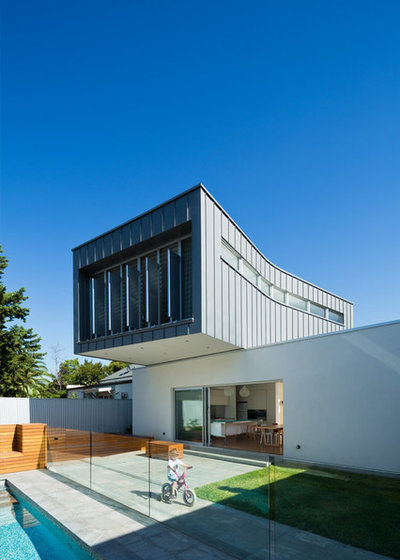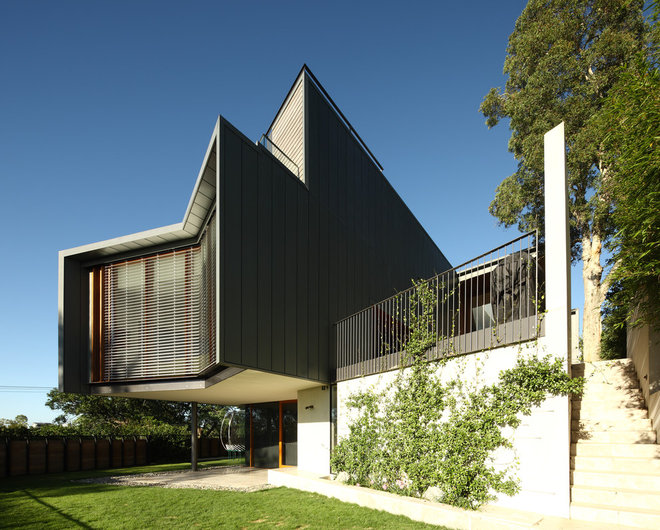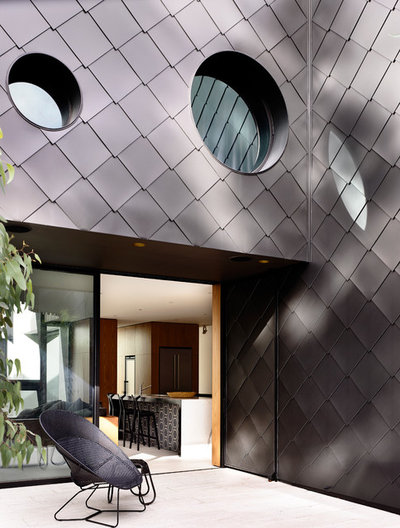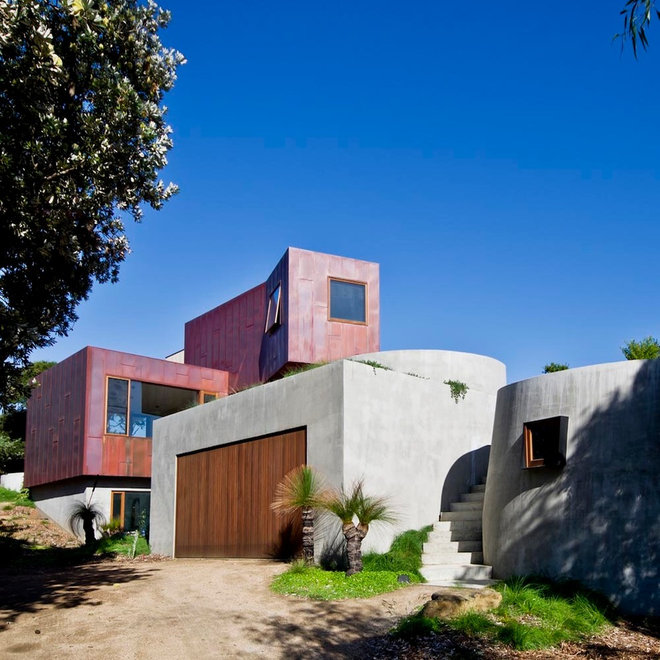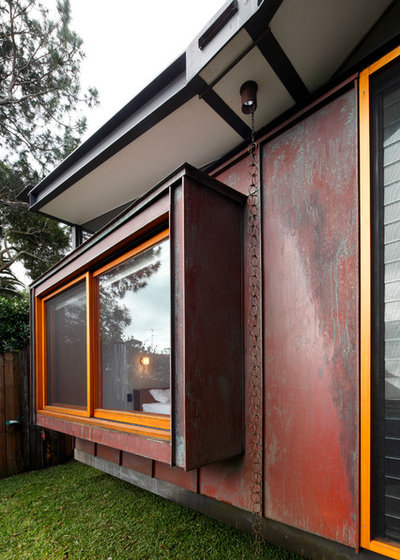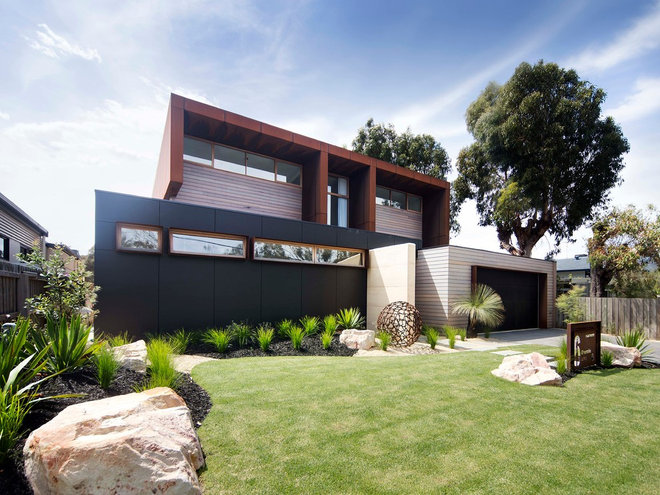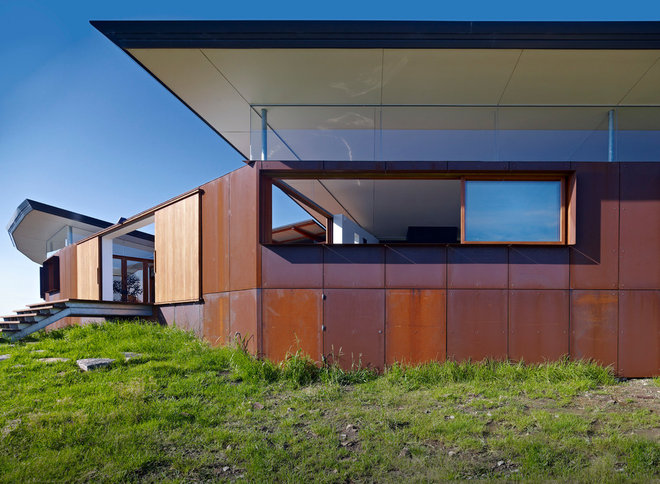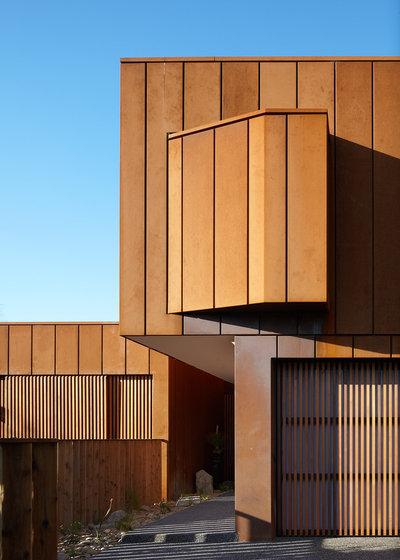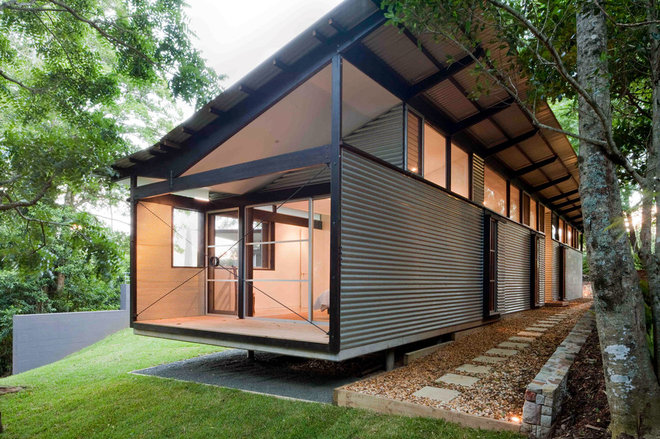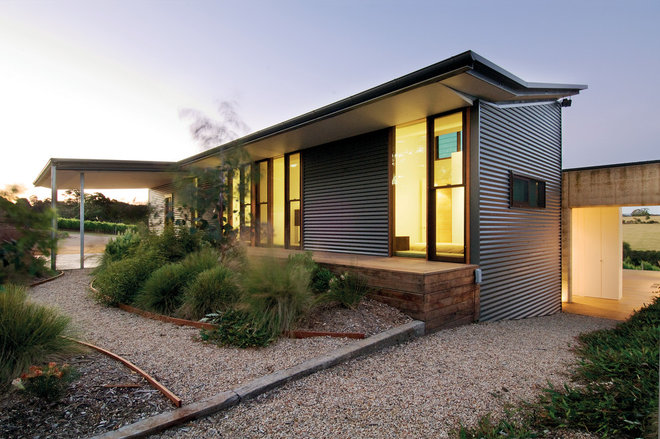News
News 18 Dec
5 Exterior Metal Cladding Types for a Flash Facade
BBH Projects was recently featured in an article on Houzz! Read the full article here:
Cladding is a non-load-bearing layer attached to the outside of a home that can protect the building from the effects of weather, and provide an element of aesthetic appeal. Metal cladding comes in a range of options, such as zinc, aluminium, copper and steel, that each have their own individual look and character, while various cladding systems include horizontal or vertical boards and overlapping panels and tiles. Metal cladding is typically durable and a sustainable alternative to some alternative materials. Here are five metal cladding materials that will add hardwearing hardware to your home.
1. Aluminium
Aluminium is a lightweight yet strong material for cladding a house. As a soft metal, it has high formability, but thickness is important for greater durability and a longer lifespan.
Aluminium is among the most waterproof of cladding materials and protects against moisture problems, which makes it a good choice for coastal homes. Aluminium cladding requires minimal maintenance and can be repainted easily if required.
In this Brisbane home, aluminium cladding takes on the appearance of a traditional weatherboard facade with a soft colour palette and thin horizontal panelling.
Aluminium is an abundant resource, however, it is non-renewable. On the sustainability upside though, it is reusable and recyclable and requires little energy to manufacture.
2. Zinc
Zinc is highly versatile and an increasingly common sight in contemporary architecture. It is a soft and malleable material, which allows for flexible construction. Zinc is extremely durable and low maintenance, and its resistance to oxidisation – by forming a naturally protective layer, known as a patina – helps it achieve an average lifespan of approximately 60 to 80 years.
Zinc is also a sustainable choice, being a non-toxic, recycled and recyclable material. It also takes less energy to produce zinc than other principal metals.
This Brisbane home is clad in pre-weathered zinc, which is natural zinc treated to visually mimic an aged patina. It is often used in locations where a natural patina may not form consistently or evenly.
The exterior facade of this Melbourne house faces a garden courtyard and has dark zinc shingles. They have the deceptive appearance of paper-thin fish scales, yet the recessed windows reveal the greater depth of the wall.
Zinc and other metals are also fire resistant, making them a good choice in bushfire-prone areas. As such, this Fairhaven residence required the use of non-combustible external materials and is clad in zinc with large vegetation clearing around it.
3. Copper
Copper is a timeless material that develops a beautiful patina and character with age, making is suitable for both traditional and contemporary homes. Copper’s warm bronze tones turn an iridescent brown through natural weathering, before developing a green patina.
Copper is lightweight and durable, which can be important on large buildings. It also has a very long lifecycle and needs no treatment or maintenance with wear and tear.
Tour this house
Being a natural material, copper has a warmth and beauty that complements materials, such as wood, concrete, stone and glass, as well as other metal facades. Copper cladding is combined with timber and zinc on this Geelong home, with each material defining the various volumes of the house.
This Melbourne home has also a combination facade with copper and zinc. The green-coloured cladding is Patina Copper, while the curved sections above are Quartz Zinc. They all have a standing seam cladding profile in which elongated panels are lapped over each with parallel vertical (or horizontal) ridges.
4. Corten steel
Corten is a weather-resistant steel (copper chromium alloy steel) that is more resistant to atmospheric weathering than other unalloyed steels. Its chemical composition reacts to pollutants in the atmosphere and promotes the early formation of a protective oxide film that constantly regenerates over time. This patina develops as a reddish brown layer and gains a darker hue with time.Despite the look of corrosion, Corten has twice the tensile strength of mild steel, making it an ideal structural material as well as being used for cladding and other architectural features.
Ways with Corten weathering steel
Corten has the ability to blend with urban, rural and industrial settings and complements natural surroundings. Shades of red, brown and orange become more textured with rain and sun exposure, creating deeper or lighter tones to the rust effect it develops.
It’s important to note that Cortensteel is not rustproof in itself and provisions should be made for drainage to reduce the possibility of rust stains on nearby surfaces.
5. Corrugated steel
Corrugated steel is a lightweight, strong and durable material that weathers well. The wave-like pattern of corrugated steel has become a recognisable and timeless element in traditional and contemporary Australian architecture, having been used since the 1850s. Corrugated cladding adds depth and texture to a facade and is available in a variety of colours. It is also easy to maintain and long lasting.
Using steel as wall cladding
Corrugated steel cladding in Colorbond’s ‘Woodland Grey’ protects this Mornington Peninsula house from nature, while also helping it blend in.
Share this:
